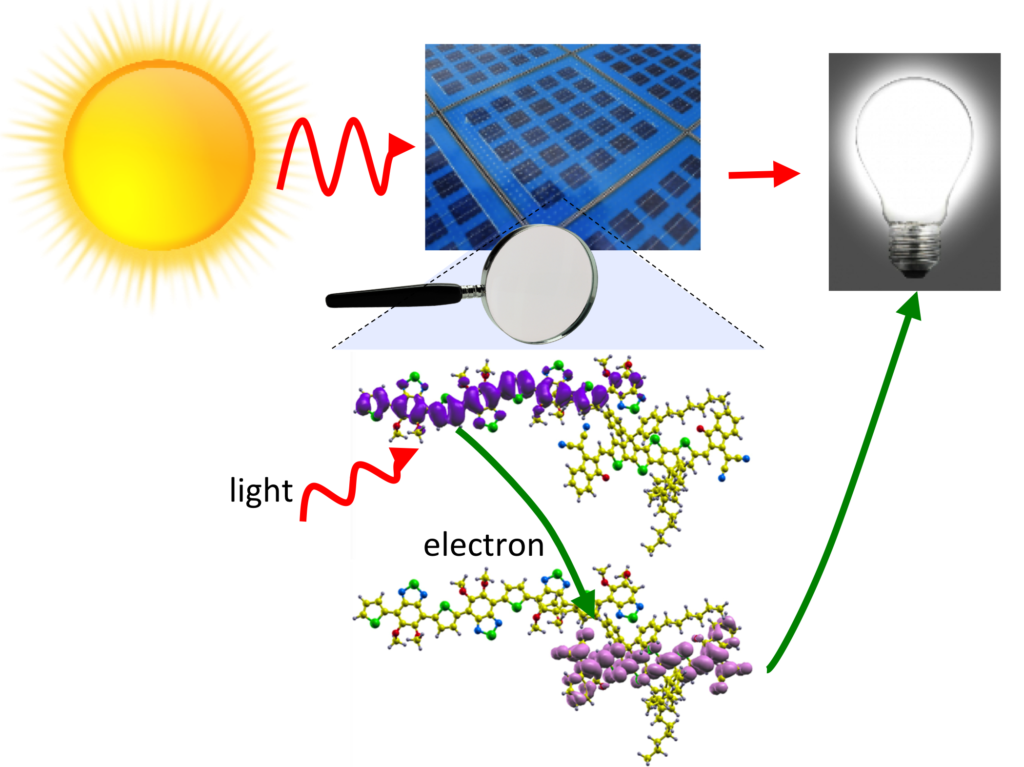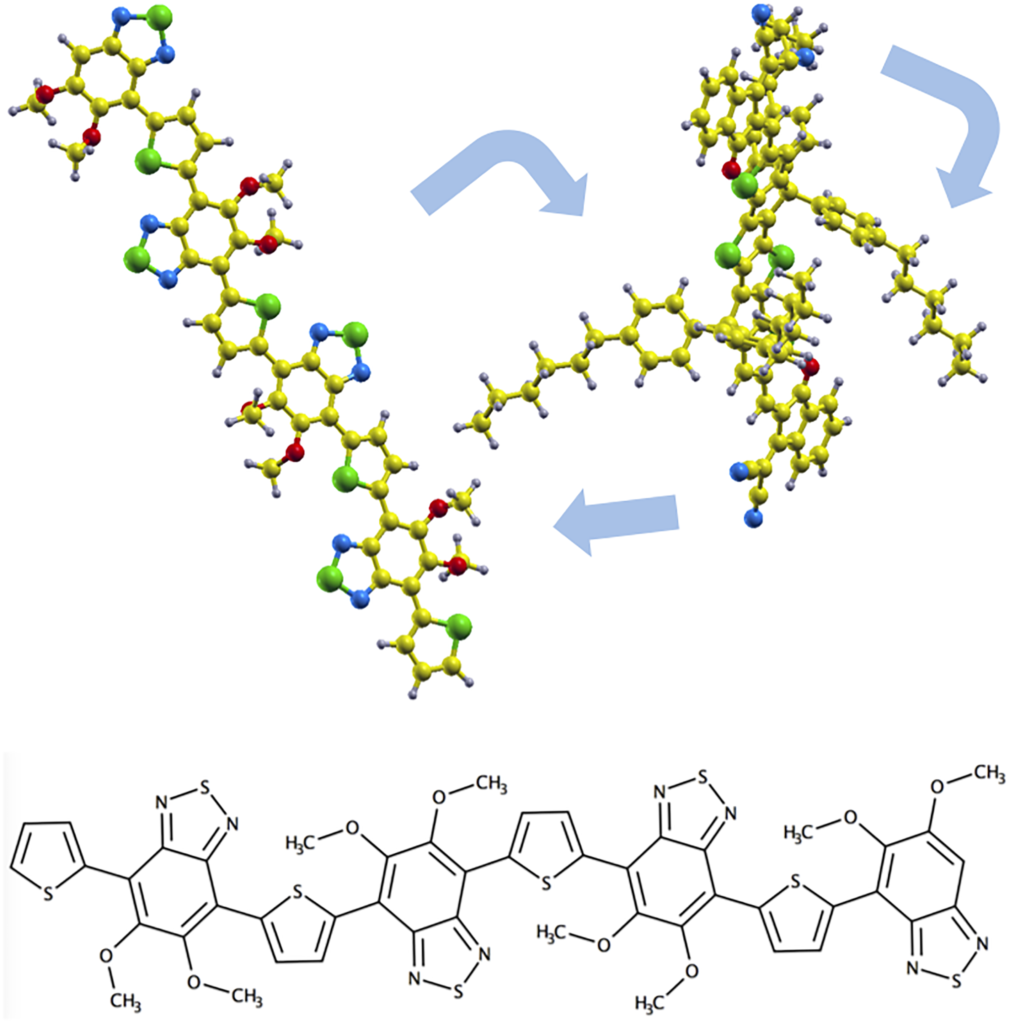
Dr. David Lopez, Universidad de Córdoba, Spain
Abstract
The need to find easily renewable and environmentally friendly energy sources alternative to the traditional fossil fuels is nowadays a global quest. The solar energy is a promising candidate and organic solar cells (OSCs) have attracted attention. In this collaboration with Merck, E-CAM scientists have used electronic structure calculations to study how a key magnitude – the HOMO-LUMO band gap – changes with respect to the molecular disposition of the donor-acceptor molecule pair.
Could you please outline the main results of your pilot project to date?
The three main results achieved with this pilot project so far are: (1) we estimated a HOMO-LUMO gap variation of 0.3 eV, which is significant considering that gaps in this context are not much larger than 1 eV; (2) we have demonstrated that there is no correlation between the gap and the binding energy of the donor-acceptor molecule pair; and (3) we have found a clearly favoured structure for donor-acceptor molecule pair with an estimated binding of 1.75±0.07 eV.
Why is this project important in general scientifically, and from an industry perspective in particular, and how is E-CAM helping the industrial partner solve this problem?
This project is important in general scientifically because it gives insight into the field of the renewable and environmentally friendly energy sources and from an industry perspective in particular because it provides important data to take into account when producing OSCs. With this pilot project, E-CAM is helping Merck to obtain highly valuable results.
Can you elaborate a little more on your approach ?
We have automated the generation of candidate structures for the molecular pair and obtained hundreds of possible structural arrangements for which, after structural optimisation, we calculated the binding energy for the pair and the band gap for the relevant electron states. Both properties were known before for many candidate molecules and molecular pairs, but a systematic study of the dependence and variability of those properties on molecular disposition was lacking. It is not only the finding of relevant molecules what matters, the way they stick together can greatly affect their performance. All the details of our investigation can be found in: López-Durán, D., Plésiat E., Krompiec M., Artacho E. (2020). Gap variability upon packing in organic photovoltaics. PloS ONE 15(6): e0234115, https://doi.org/10.1371/journal.pone.0234115.
What are the chief difficulties in modelling your interest systems ?
We can mention two difficulties found in this work, among others. First, the weak interaction between the molecules gives rise to difficult and slow calculations. The only way to reduce the computing time was using an acceleration scheme. Second, the large number of considered 4modBT-4TIC donor-acceptor pair structures that we had to manage at the same time was a challenge solved through advanced software techniques.

Is your solution already being applied? Is it being tested by others and/or by the industrial partner?
As far as we know our solution is not being tested or applied yet; but in our opinion this work will be soon widely considered by the scientific and industrial community due to the similarities with another compounds already employed in the field.
References
López-Durán, D., Plésiat E., Krompiec M., Artacho E. (2020). Gap variability upon packing in organic photovoltaics. PloS ONE 15(6): e0234115, https://doi.org/10.1371/journal.pone.0234115.
